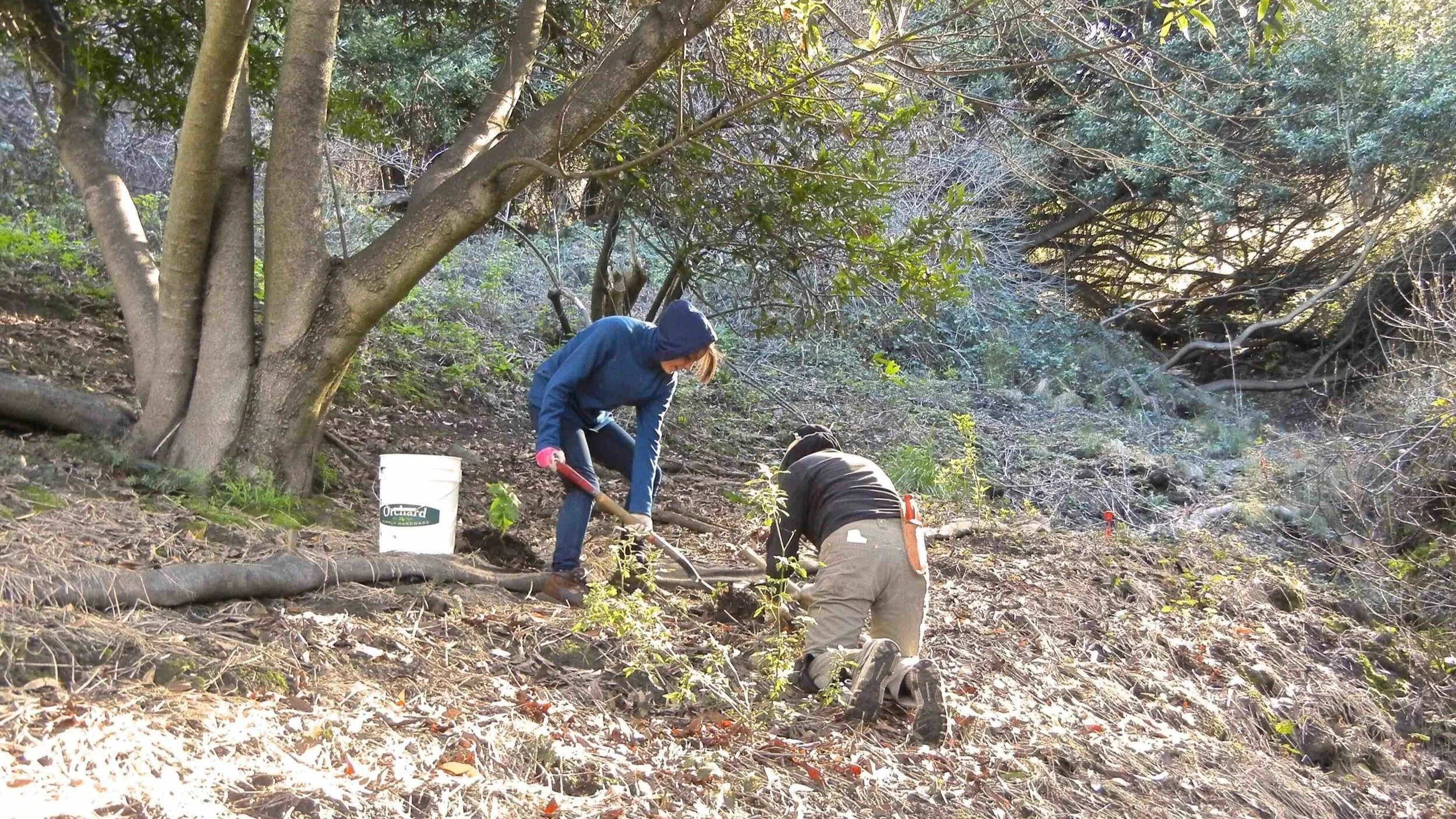Many plants in the upper canyon are beginning to transition into their next phase and we are seeing many catkins in bloom! To avoid a catastrophe like LA experienced (and our neighborhood experienced in the 1991 fire), we need to stay vigilant about our risks and know what we can do to lessen them. Here are some resources to help you be prepared. Measure MM $99/parcel tax will be collected and funds made available to the City of Oakland starting with the 2025-2026 property tax period. Read the Vegetation Management Plan.
Comments submitted by Jerry Kent regarding UC's NOP and Initial Study
The Conservancy has been a strong supporter of the University’s efforts to mitigate fire hazards on the Hill Campus since the 1991 fire—including the significant fire hazard reduction improvements that were achieved between 2000 and 2007 in Claremont Canyon, at Chaparral Hill, and along the Grizzly Peak Boulevard Ridgetop Fuel break between Grizzly Peak and Chaparral Hill. We believe UC was able to accomplish important fire mitigation work at these project areas with limited funds, limited staffing, and without opposition by the public.
UC awarded $3.6 million grant for its Hill Campus by Jerry Kent
After more than a decade of disappointments in its failure to obtain funding to assist with vegetation management and wildfire protection, the University of California is once again hopeful as it has been awarded a $3.6 million grant from Cal Fire.
UC’s Grant Proposal to Cal Fire: The University of California at Berkeley proposes to treat vegetation in 250 acres in its Hill Campus (upper parts of Strawberry and Claremont canyons) to reduce wildfire hazard to its buildings and nearby homes, targeting areas forested with “flammable eucalyptus and high fuel volume.” UC will also create defensible space within 100 feet of roads, fire-trails, buildings, and homes and increase the reliability of the 150 KV transmission line that supplies power the campus and Lawrence Berkeley National Laboratory.
The failure of planning to address the urban interface and intermix fire-hazard problems in the San Francisco Bay Area, by Joe McBride and Jerry Kent
(Article originally appeared in the International Journal of Wildland Fire, January 7, 2019. Reprinted here with permission from the authors.)
(Many recommendations) for fuel mitigation and architectural changes have not been addressed. In spite of the recommendations for fuel management put forth in more than 30 plans since 1923, no region-wide action has taken place. Individual agencies and local Fire Safe Councils have, in part, followed up on recommendations for fuel management on land they administer, but often a complete adoption of recommendations has not taken place. The failure to enact all of the recommendations of these is due to various combinations of the following reasons:
UC in mediation with FEMA to recover funds, by Jerry Kent
The Conservancy has previously reported its full support of UC Berkeley’s efforts to recover funding granted in 2015 by the Federal Emergency Management Agency (FEMA). The grants were to reduce fire danger on UC's hill campus in Claremont and Strawberry canyons by removing stands of hazardous trees.
Grizzly Peak and ridge fire potential, by Jerry Kent
Costs for growing large eucalyptus trees will sky-rocket, by Jerry Kent
AGENCY DECISIONS ABOUT GROWING large blue gum eucalyptus trees may be as risky as Frank Havens’ Mahogany Eucalyptus and Land Company of the early 1900s. That enterprise ultimately went belly-up when Havens’ 3,000 acres of eucalyptus trees in the East Bay Hills failed to become a “gold mine,” proving to be unusable for hardwood lumber.

